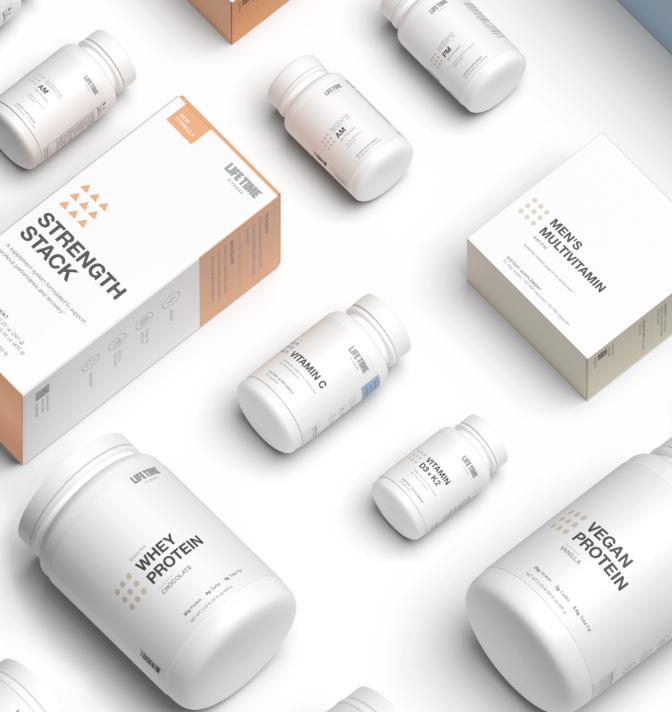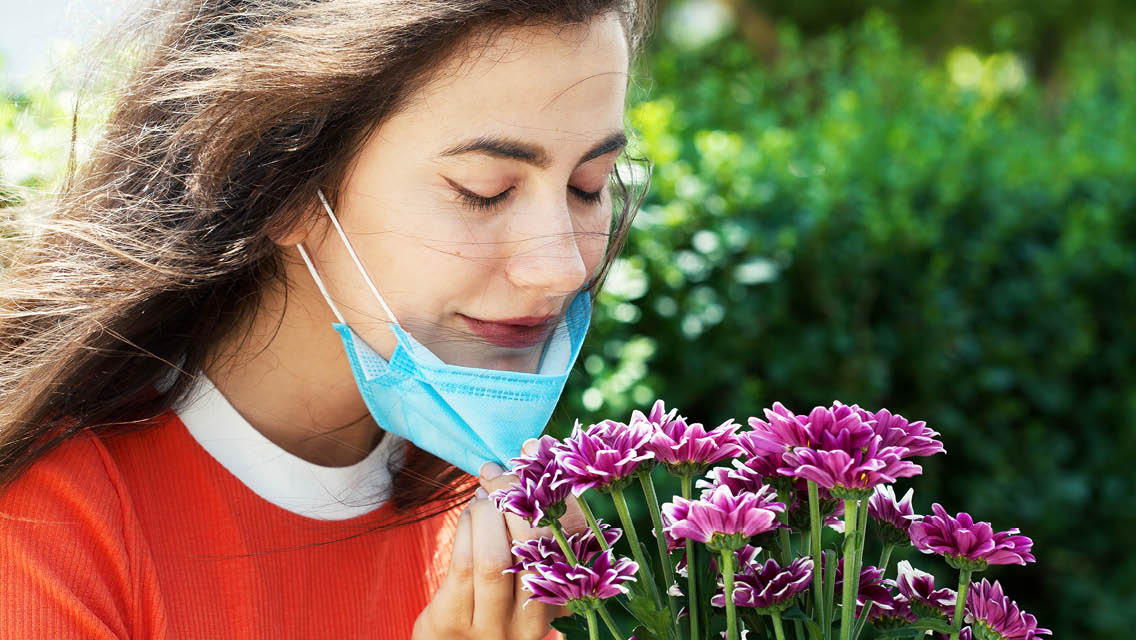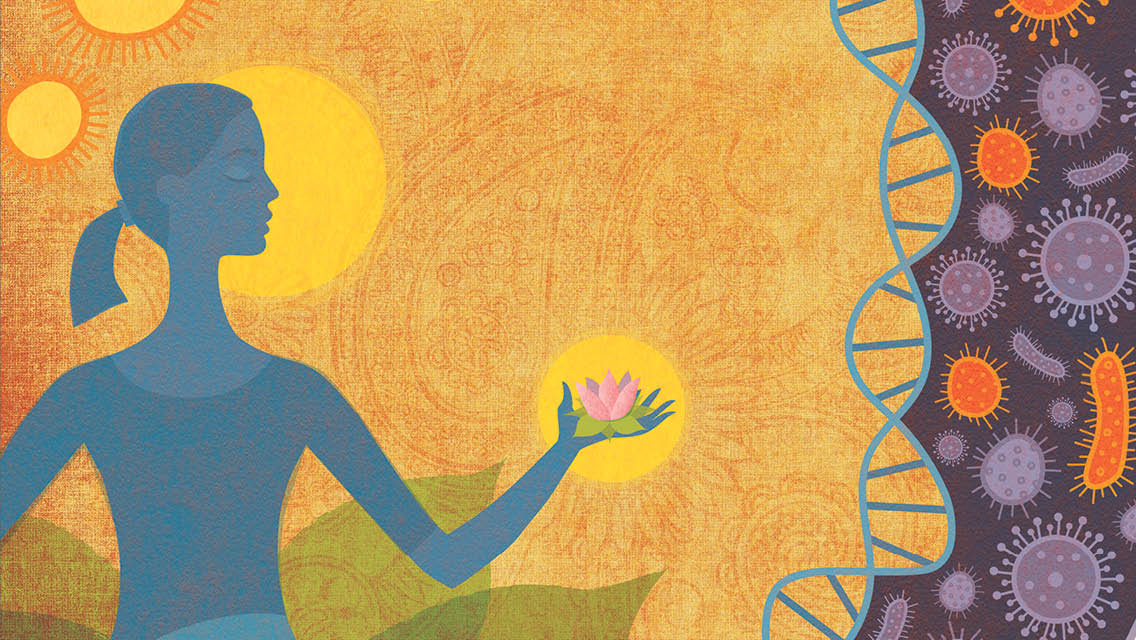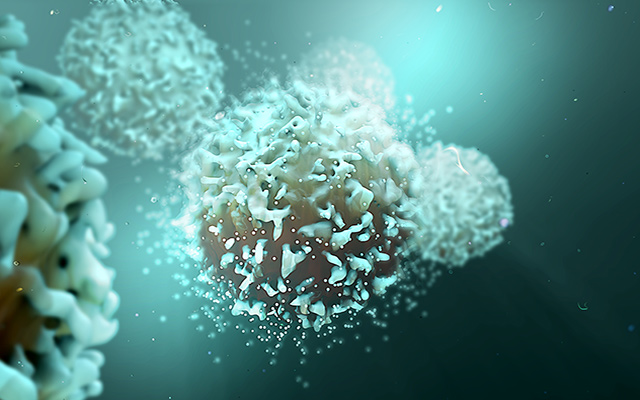Nicole Press started feeling unwell in March 2020. At first, the stage manager, who splits her time between New York City and Pennsylvania, thought it might be allergies. But about a week in, she crashed hard.
“It felt like the worst flu I’ve ever had,” recalls Press, 37. She got tested for the coronavirus — SARS-CoV-2 — and her results came back positive. “At the time, I thought I was lucky,” she says. “I thought I’d be through with it and then be able to donate antibodies to others.”
But her COVID-19 symptoms dragged on and on and became debilitating: rashes, muscle aches, dizzy spells, fatigue, cough, shortness of breath, absence of taste and smell, vomiting, brain fog, body tingles, acid reflux, broken blood vessels, and hair loss.
“It hit two weeks, then three weeks, then a month,” says Press. “In hindsight, I would have done things differently [and gone to the doctor], but at the time, there were trucks full of bodies, healthcare workers were overwhelmed, and the message was ‘Stay home, don’t ask for help.’ So I just took vitamins and hoped for the best.”
Two months on, Press finally telephoned her doctor, who called her in for bloodwork. She tested positive for coronavirus antibodies, showed high levels of a generic inflammation marker, and was deficient in vitamin D. She also tested positive for mononucleosis (an illness caused by the Epstein-Barr virus), which she had previously contracted in high school. The rest of her labs looked normal.
She now understands that her condition is shared by many who have been infected with the novel coronavirus. It’s become known as COVID long-haulers phenomenon — as well as long COVID, post-acute COVID, post-COVID syndrome, or PASC, for Post-Acute Sequelae of COVID-19. It is receiving increasing attention as the number of sufferers with lingering symptoms rises worldwide.
A survey of Americans with mild COVID cases found that 35 percent hadn’t fully recovered two to three weeks after diagnosis. And English researchers estimated in the British Medical Journal that around 10 percent of people will experience symptoms lasting more than three weeks, while a smaller proportion will continue to feel unwell for months.
With more than 105 million confirmed COVID cases worldwide at press time, millions of people are or will be in the same boat — struggling to make sense of ongoing symptoms that their healthcare providers are often unable to help them address.
The absence of a clear biomarker makes chronic conditions like these challenging for many conventionally trained doctors, explains Elizabeth Boham, MD, MS, RD, a functional-medicine physician and medical director at the UltraWellness Center in Lenox, Mass.
“That’s what’s hard with all the postinfection inflammatory syndromes — long COVID, as well as chronic fatigue syndrome and chronic Lyme. There’s not one biomarker that says, ‘Oh, this is what it is.’ So physicians may discount it and say, ‘You’re recovered. You should be feeling better.’”
Yet increasing numbers of patients with chronic conditions, including growing numbers of COVID long-haulers, are looking for functional and integrative solutions, says Leo Galland, MD, a functional-medicine internist in New York City.
Postviral Fatigue
Long COVID shares several key characteristics with chronic fatigue syndrome (CFS) and chronic Lyme disease. These include problems with mitochondrial function (mitochondria are the energy-producing powerhouses inside our cells), fatigue, brain fog, and muscle pain. (See “The Care and Feeding of Your Mitochondria” to learn more about your “energy factory”.)
The condition also has unique features, notes Galland. “In long COVID we see more organ systems involved. Chest pain, cough, and shortness of breath are common, as well as GI symptoms and abdominal pain. It’s also notable the degree to which they fluctuate. People can feel good one week and lousy the next, or even day to day.”
This certainly describes Press, who says her symptoms came in random waves. “Some days I pick up a glass of water and it feels like a glass. Other days it feels like a sandbag. I wake up in the morning and I don’t know how it’s going to be.”
While long COVID can present a larger and more varied constellation of symptoms than CFS or chronic Lyme, it seems to respond well to the same tools functional-medicine providers use to address those conditions.
“In the functional-medicine world, we look at the different functions that go on in the body,” explains Patrick Hanaway, MD, senior advisor to the CEO of the Institute for Functional Medicine. “When we look at a post-infectious state where someone is having persistent symptoms across multiple organs, we ask, ‘What’s the functional imbalance that’s going on here?’”
Seeking the Root Causes of Symptoms
About three weeks into her COVID infection, Press started to lose feeling in her lips and struggled to breathe as a tingling numbness spread across her face. Her husband, Max, took her to the ER, where doctors dismissed her symptoms as a panic attack and sent her home.
In online support groups, many people describe similar experiences: lingering COVID symptoms are dismissed as a product of emotional or psychological distress.
“It’s real, but the doctors often say they don’t know what to do anymore,” says Press.
In June 2020, Press enrolled in a post-COVID patient-study group at New York City’s Mount Sinai Hospital. She was referred to an array of specialists, including a neurologist, rheumatologist, cardiologist, pulmonologist, rehab physician, dermatologist, and gastroenterologist.
While she was happy to be taken seriously, she didn’t sense they were connecting the dots among her wide-ranging symptoms. One doctor put her on an anti-inflammatory diet, but when she started having digestive issues, another instructed her to end it.
“I’m grateful for all of them, but I wish the doctors communicated with each other,” she says.
Complex conditions like this often challenge physicians who specialize in particular areas, but the root-cause approach of functional medicine can be especially well-suited to the task.
“Long COVID is a complex, multifactorial condition,” notes Hanaway. “We need to look at it not on an organ-system basis, but from a functional basis, to say, ‘What’s underneath here? What are the functions that interrelate those systems and how do we address that?’” (For more on what differentiates functional medicine, see “Functional Medicine: A Science Whose Time Has Come“; for functional-medicine recommendations for boosting immunity, see “5 Ways to Boost Your Immunity“.)
Going Upstream
Some people are infected by the coronavirus and never get sick; others suffer damage to their immune system and ongoing inflammation. These effects can produce a broad range of symptoms, including cardiac inflammation and tachycardia (a heart rate of more than 100 beats per minute), fatigue, pain, brain fog, and breathing difficulties.
Two primary mechanisms may account for long-haul symptoms, says Galland: persistent immune imbalance and a disturbed gut microbiome.
“One thing that’s been documented in people who haven’t recovered from an acute infection is a consistent upregulation of white blood cells called monocytes and macrophages,” he says. “A lot of the symptoms have to do with that persistent immune imbalance and increased inflammation. It’s like a switch gets turned on that doesn’t get turned off.”
Galland traces this to the way COVID inactivates the ACE-2 enzyme. ACE-2 is the doorway the virus uses to enter our cells and is one of the body’s best tools for establishing balance and controlling inflammation.
“All the severe long-COVID symptoms can be traced back to the loss of ACE-2 activity, even in those who didn’t get really sick,” he explains. “Loss of ACE-2 can cause problems with energy metabolism and mitochondria, and result in cardiac problems, pneumonia, blood clots, kidney failure, strokes, seizures, brain fog, purple toes, excessive inflammation, and autoimmune disease.”
There is an abundance of ACE-2 receptors in the GI tract as well, and COVID commonly produces gut dysbiosis. This allows pro-inflammatory bacteria to thrive in the gut microbiome and contributes to other inflammatory symptoms, he says.
Dietary changes can be the first step to easing inflammation and oxidative stress, supporting ACE-2 activity, and improving mitochondrial function. “The treatment that I’m favoring involves supplements and a diet that is anti-inflammatory and flavonoid-rich, and helps to create a healthier gut microbiome,” he says. This functional-medicine approach allows him to address the range of symptoms at their root. (See “How to Build a Gut Friendly Plate” to learn about the “Good Gut Rule of Five”.)
“We have experience using these tools with people with tick-borne and viral infections in the past and seeing improvements,” notes Hanaway. “Functional practitioners are using those same systems-biology tools to help return [long-haulers] to normal function.”
Strategies for Treating Long COVID
A root-cause approach is helping many long-haulers when a symptoms-based one might not. The following is an overview of the specific strategies functional providers are using to help these patients tackle their symptoms.
Each case has different precursors, and not all long-haulers will have the same outcomes with the same treatments, but these may help.
Diet and Nutrition
A food-first approach is the bedrock of integrative treatment. “Diet can be a source of inflammation, and whatever we can do to lower [inflammation] will allow the immune system to work better,” says Boham. She recommends her patients limit their intake of refined carbohydrates and focus on whole foods rich in protein, fiber, healthy fats, and the micronutrients the immune system needs to thrive.
Supporting a good nutrient baseline is also key. “We see a significant amount of nutrient deficiencies and insufficiencies in the United States,” Boham says. Notably, insufficient levels of zinc and selenium are associated with worse outcomes from viral infections. Good sources of zinc include oysters, hemp seeds and pumpkin seeds, beans, nuts, and animal protein; sources of selenium include mushrooms, Brazil nuts, and seafood.
“Make sure you’re getting eight to 12 servings of phytonutrients a day from vegetables, fruits, spices, herbs, and tea,” she advises. Phytonutrients such as EGCG (epigallocatechin gallate, a polyphenol found in green tea) and curcumin (found in turmeric) can decrease inflammation and rebalance the immune system. (For more on nutrition and immunity, see “Nutritional Support for Your Immune System“.)
N-Acetylcysteine (NAC)
NAC is an amino acid that the body uses to create glutathione, the body’s master detoxifier. “Glutathione has a big impact on balancing the immune system,” explains Boham. “If we’re deficient in it, we’re more likely to get sick, and also to have a continued immune response.”
Eating plenty of cruciferous vegetables (such as kale, broccoli, and cabbage), as well as avocado, okra, spinach, and alliums, can help bolster levels of glutathione, as can supplementing with NAC. (For more on glutathione, see “Glutathione: The Great Protector“.)
Aaron Hartman, MD, founder of the Richmond Integrative and Functional Medicine clinic in Richmond, Va., describes one patient, a 26-year-old woman, whose symptoms — persistent low oxygen and shortness of breath — following a bout of COVID resolved after treatment that included NAC as well as omega-3 fish oil.
“NAC is one of the more important nutrients for people who get shortness of breath with COVID, because of its ability to break down those really, really small blood clots called micro-emboli,” explains Hartman.
Vitamin D
Much has been written about the emerging link between COVID severity and vitamin-D deficiency. A pilot study in Spain found that adding oral D3 supplementation significantly reduced the need for ICU treatment among people hospitalized after infection. And Galland notes that D is an important promoter of ACE-2 activity.
He recommends that people with long COVID supplement with up to 5,000 IU of D3 daily. Hartman advises aiming for a vitamin-D blood level in the range of 60 to 80 ng/mL. (For more on vitamin D, see “Vitamin D: What You Need to Know“.)
Resveratrol
Resveratrol is a polyphenol with antioxidant and anti-inflammatory effects that’s found in red grapes, red wine, peanuts, and some berries. It’s also available as a supplement.
Galland has found it to be particularly helpful in restoring his COVID patients to health. “Resveratrol has a number of beneficial effects on coronavirus infection,” he notes. “It supports ACE-2 function, it inhibits the growth of the deadly MERS coronavirus through multiple mechanisms, and it diminishes the kind of inflammation associated with coronavirus infection.”
Galland treated a physician in her 60s who’d been sick with COVID for six weeks, continuing to run daily fevers with brain fog and fatigue. He prescribed a combination of herbs and supplements, including resveratrol, and her symptoms resolved within a couple of weeks.
He recommends long-COVID patients supplement with 200 mg of resveratrol twice a day.
Intermittent Fasting
Some functional providers believe intermittent fasting or time-restricted eating can help rejuvenate the immune system. Restricting feeding to shortened windows helps stimulate mitophagy (the removal of damaged mitochondria), Hanaway explains.
Fasting also supports the turnover of damaged cells throughout the body, making room for new, healthy mitochondria and cells to take their place.
Time-restricted eating can take a variety of forms. One of the most popular is simply eating all your day’s meals within an eight-hour window, then going 16 hours without food or calories. (For more on this protocol, see “Everything You Need to Know About Intermittent Fasting“.)
Probiotics
COVID can wreak havoc on the gut microbiome, but research on specific probiotic strains that can best restore balance following the syndrome’s particular damage is in its infancy. Galland is looking into soil-derived bacteria of the genus Bacillus because it may have natural antibiotic properties, though there’s not yet enough data to make specific recommendations.
Eating fermented foods, such as sauerkraut, yogurt, kefir, and kimchi, can help fortify and support the gut’s microbiome. And in the event of ongoing gut disturbances, working with a functional-medicine provider to design a well-rounded prebiotic and probiotic protocol can help bring the microbiome back into balance. (For more on probiotics, see “Everything You Need to Know About Probiotics“.)
Melatonin
Melatonin is an anti-inflammatory and antioxidant chemical our bodies produce to help regulate the sleep–wake cycle. It also supports the gut lining, which promotes healthy immune function.
Supplementing with 1 mg of melatonin at bedtime might benefit those whose sleep–wake cycles have become dysregulated with long COVID.
Quercetin
Quercetin is a flavonoid found in dill, broccoli, onions, capers, apples, and berries. “Quercetin is a mast-cell stabilizer,” says Boham. “We use it with people who have allergies, asthma, and mast-cell issues.” (Mast cells, a type of white blood cell found in connective tissue throughout the body, produce allergy-related symptoms and can also be activated by SARS-CoV-2 infection.)
Quercetin appears to bind to the spike protein of the coronavirus, inhibit inflammatory pathways, and block replication of infected cells. It is also antiviral and completely safe, she adds.
In addition to emphasizing sources of quercetin in their diet, Boham says, long-COVID patients can supplement with 500 mg twice a day.
Other Herbs and Supplements
Galland has found three herbs especially useful in helping COVID patients: astragalus, Chinese skullcap (Scutellaria baicalensis), and andrographis. Astragalus and Chinese skullcap may help compensate for loss of ACE-2 by performing some of its functions; andrographis can help prevent the virus from entering cells by inhibiting an enzyme called furin.
Dosages depend on preparation, so work with a functional-medicine provider or herbalist to find the right dose.
Other tools for treating postviral inflammation can include trace minerals, omega-3 fish oils, ECGC (the compound found in green tea), and the antioxidant CoQ10. Dietary and lifestyle interventions, such as emphasizing sleep, managing stress, and mitigating environmental irritations (for instance, by using HEPA filters) can also help.
The Path Ahead
These strategies are a starting point for functional- and integrative-medicine providers seeking to treat long COVID, but each patient will require a unique protocol. Working with a practitioner to identify your specific symptoms in the context of your unique environment, lifestyle, triggers, and history can help provide a focused plan of action.
“You want to work on your whole health,” says Hartman. “You want to work on your foundations — diet, lifestyle, exercise. You want to figure out what was going on in your life that set you up and triggered the events that led to your symptoms. This is called getting to the root cause. You want to work on your current environment, stressors, a whole host of things.”
And that’s where a provider who takes an integrative, root-cause approach can be useful. “They can help look for nutritional deficiencies and absorption issues, or look more deeply at something that may be holding back your immune system,” says Boham.
One of the pandemic’s few bright spots is the way it’s accelerated telehealth services. Patients now enjoy unprecedented access to a broad range of functional-medicine providers across the nation. (Find one near you — or one who provides virtual consulting — at www.ifm.org/find-a-practitioner.)
Nicole Press was happy to discover that, in addition to the many specialists, members of the Mount Sinai Long COVID patient group also could consult with a functional-medicine provider. “She acknowledged my concerns and isn’t only treating one part of my body, which I like,” says Press.
In addition to offering dietary guidance, the doctor put her on a probiotic and a CoQ10 supplement, which Press hopes will help mitigate some of her neurological symptoms.
At a recent checkup, the Mount Sinai rehab physician told Press she was getting better. “She told me I’m now in the most delicate phase of recovery, and I should be very gentle with my body,” says Press, who is hopeful about her future.
Boham urges Press and others to keep focusing on the body’s ability to recover. “Remember that your body knows how to do this. This is a new virus and it can wipe people out, but the body has a tremendous ability to heal.”
This piece originally appeared in the April 2021 issue of Experience Life magazine as “Help for the Long Haul.”





This Post Has 7 Comments
My roommate takes astragalus. Has been outside and never was burdened by COVID-19 issues. I have stayed inside but managed to get it. I am in a very low risk demographic. Young and formerly very fit. I used to take astragalus myself, but noticed that it would actually make my hair come in darker. Not kidding. So he was taking it for the last year plus and I wasn’t. Suffering still from covid long haul (hair WAS falling out, skin has oddest blotches, had full on “covid toes”, blood clots, and messed up girl menses, and now aura migraines). I AM off to start taking it now. Since my issues with covid long-haul are all physical, no one can claim it’s just a placebo effect if everything clears up when I start taking it!
This is the most informative yet positive article that I’ve read on this COVID topic yet. I got information to understand family and friends going through symptoms still. Also learned what I can do to stay healthy during these times. Thanks again for this great article.
You didn’t mention that high glyphosate foods (commerical corn, soy oats and meats) damage intestinal bacteria so it is necessary to avoid them as much as possible.
Thank you. Very informative. Best and most helpful thing I have read concerning COVID.
“In long COVID we see more organ systems involved. Chest pain, cough, and shortness of breath are common, as well as GI symptoms and abdominal pain. It’s also notable the degree to which they fluctuate. People can feel good one week and lousy the next, or even day to day.”
Show me someone who thinks this and I’ll show you someone without a lot of experience treating PTLDS.
I can’t understand why an article supposedly based on a sensible functional medicine approach would fail to even mention the most important strategy of all — high-dose Vitamin C. See these studies: https://orthomolecular.activehosted.com/index.php?action=social&chash=6f3ef77ac0e3619e98159e9b6febf557.213&s=6039e875e9433b4654d216aca2c64d85
This article is very good reading. As a trained medical herbalist I find the insights given to be very beneficial. I am happy to see that functional medicine is an important tool in the fight against long COVID. The information on the important of food and the suppliments named is great information